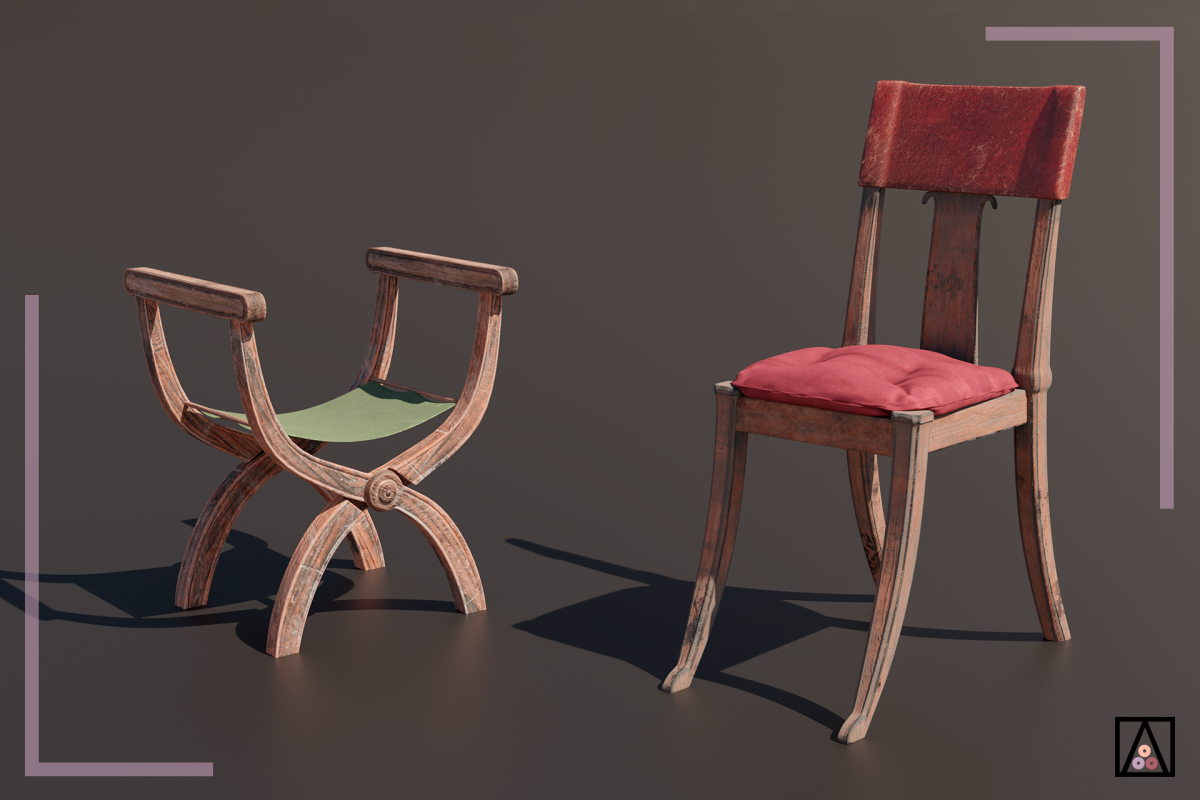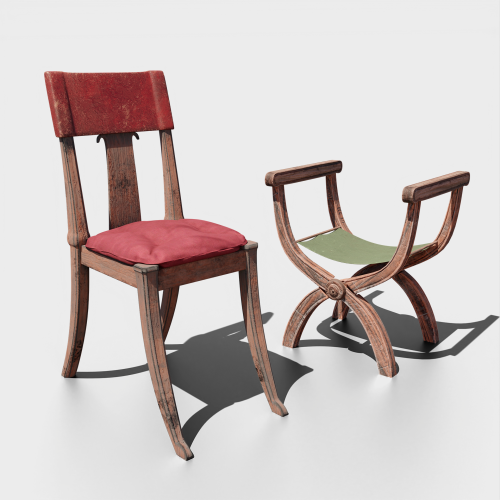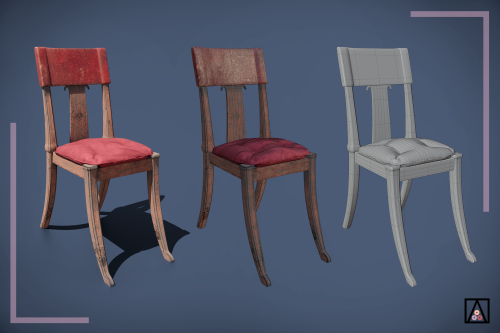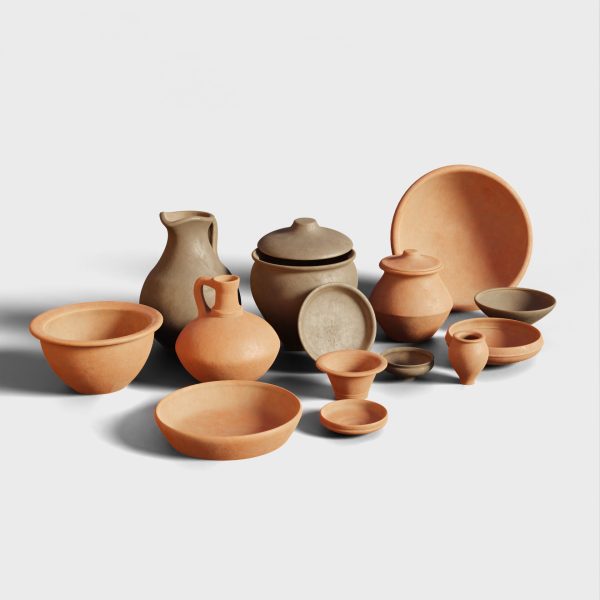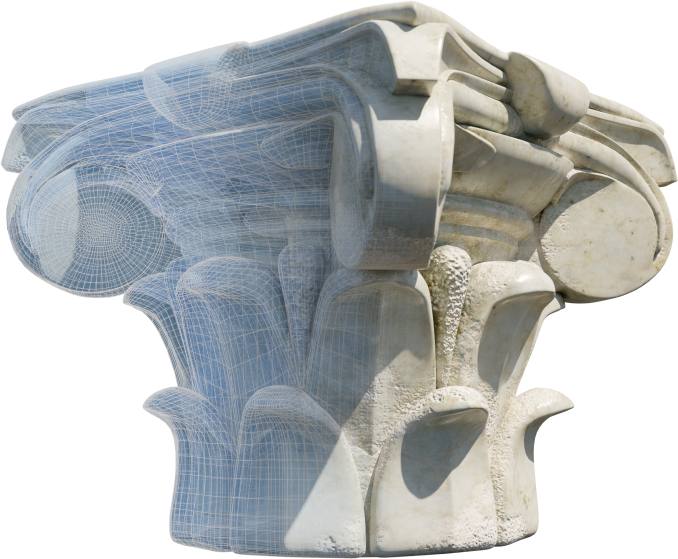3D reconstruction of two types of chairs or seats from the Roman period. One of them with a high back and curved feet (cathedra), with a soft cushion that protruded on the sides, based on the chair that appears in the so-called Statue of the Empress Helena, mother of Constantine (Ufizzi Gallery), although it appears to have been adapted from an older one which can be dated to about AD 166. and that it would represent Lucila, a princess of the Antonian period and who would have suffered the damnatio memoriae (Arata, 1993).
The other chair is known as the curule type, whose main characteristics are the absence of a backrest and those curved legs forming an X. The armrests were low and could be folded, facilitating its transport by magistrates and other senior officials.
LOD0: 193K Poly / 386K Tris
LOD1: 96K Poly / 98K Tris
LOD2: 29K Poly / 30K Tris
LOD3: 4K Poly / 4K Tris
Game Ready Model
Formats: .FBX; .OBJ; .blend.
PBR materials (JPG/PNG)
Texture maps: Base Color, Normal Map, Metallic, Roughness, AO, Height.
Texture resolution: 1K, 2K and 4K.
Rigged: No
Animated: No
Mask for color alternatives: No
ARATA, F.P., (1993): "La statua seduta dell’imperatrice Elena nel Museo Capitolino. Nuove considerazioni conseguenti il recente restauro", en Mitteilungen des Deutschen Archäologischen Instituts, Römische Abteilung. Pp. 42-51
SCHÄFER, T., (1989): "Imperii insignia: Sella Curulis und Fasces. Zur Repräsentation römischer Magistrate", Mainz von Zabern, Mitteilungen des Deutschen Archäologischen Instituts, Römische Abteilung; 29.
VARNER, E.R., (2001): "Portraits, Plots and Politics: Damnatio Memoriae and the Images of Imperial Women", en Memoirs of the American Academy in Rome, Vol. XLVI. Pp. 75-76.
WANSCHER, O., (1980): "Sella Curulis: The Folding Stool, an Ancient Symbol of Dignity". Copenhague: Rosenkilde & Bagger.

